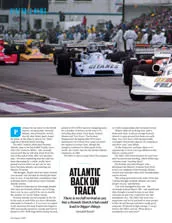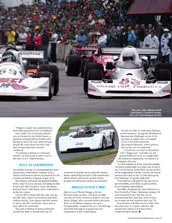

Atlantic back on track
There is no full revival as yet, but a Brands Hatch trial could lead to bigger things Perhaps the last piece in the British historic racing puzzle, Formula Atlantic was…
Despite only recently coming out of a total ban on all motor sport that lasted over 60 years, Switzerland still boasts an impressive racing history compared with other countries. A new study, completed by Select Car Leasing, endeavoured to work out which nation boasts the highest ratio of Formula 1 drivers compared to its total population.
Usually we are a little sniffy about such surveys, but this one throws up some interesting quirks. While the UK fared well with its 160 F1 participants to date – not including Lando Norris and George Russell, who have yet to start a GP – equating to a score of 2.439 F1 drivers per 1m citizens, it came in second… to Switzerland.
While the land of skiing and army knives has only produced 32 grand prix drivers to date – not including Romain Grosjean, who was born in Switzerland yet races under a French licence – that equates to a score of 2.850 F1 drivers per 1m population.
Switzerland’s first F1 driver was Emmanuel ‘Toulo’ de Graffenried, who contested 23 races, including the first F1 Grand Prix in 1950 and took a best finish of fourth in Belgium in 1953. Its most recent was Sébastien Buemi, who exited the sport’s top tier in 2011. Its most successful export was Clay Regazzoni, who finished second in the 1974 world championship.
Another part of the study gauged success in F1 against population figures, and found Finland to be the most successful per head, with its four world titles from three drivers – Keke Rosberg, Mika Häkkinen and Kimi Räikkönen – giving it one champion for every 1.3m citizens.